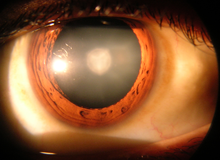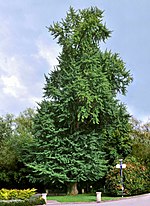Dorairajan Balasubramanian
Dorairajan Balasubramanian | |
|---|---|
| Born | 28 August 1939 Ocular biochemistry |
| Spouse | Shakti |
| Children | 2 |
| Awards | National Order of Merit (France) Shanti Swarup Bhatnagar Prize Third World Academy of Science AwardKhwarizmi Award UNESCO Kalinga Prize INSA Indira Gandhi Prize DST National Prize Goyal Prize INSA J. C. Bose Medal Om Prakash Bhasin Award IACS Dr. Mahendra Lal Sircar Prize Fukui Award Ranbaxy Research AwardSBCI Sarma Memorial Award FICCI AwardICMR M. O. T. Iyengar Award Rev. Fr. L. M. Yeddanapalli Memorial Award |
| Website | Profile on Academy of Sciences Leopoldina |
Dorairajan Balasubramanian, popularly known as Professor Balu, is an Indian biophysical chemist
Biography
Dorairajan Balasubramanian was born on 28 August 1939
Balasubramanian returned to India in 1966 and joined the
Balasubramanian is married to Shakti who is associated with ETV as a producer and the couple has two daughters.[3][4] The elder daughter, Katyayani is a research analyst and the younger one, Akhila works as a public health professional.[3][4] The family lives in Hyderabad.[3][5]
Positions
Balasubramanian is a visiting scientist at the National Eye Institute, Bethesda and is a senior Fellow of ophthalmology at the University of Melbourne.[2] He is the chairman of the Task Force on Stem Cell Research set up by the Department of Biotechnology of the Government of India.[5] He is a former president of the Indian Academy of Sciences (2007-2010)[4][8] and is the incumbent the chairman of the Biotechnology Advisory Council of the Government of Andhra Pradesh.[3] A former secretary general of The World Academy of Sciences,[3][4] he has served as the project coordinator of Translational Centre in Eye Diseases of Champalimaud Foundation (C-TRACER) and the Affordable Healthcare Project of the Wellcome Trust for finding solutions for the use of scaffolds for cultivating stem cells.[8] He is a former member of the International Human Rights Network of Academies and Scholarly Societies,[12] the International Basic Sciences Panel[13] of UNESCO and the International Chapter Affiliate Committee of the Association for Research in Vision and Ophthalmology (ARVO),[14] United States.[8] He has also served as an editorial board member of several international journals.[4][5] He had also been appointed as one of the honorary advisory committee members for the International Conference on Genome Biology 2019 (ICGB'19) by the School of Biological Sciences of Madurai Kamaraj University.[15]
Legacy



Balasubramanian started his research activities in 1965 focusing on the structure and functions of proteins and

After the turn of the century, Balasubramanian and his colleagues started working on inherited eye diseases
Balasubramanian is now working on
Balasubramanian has published 6 books[3] of which two books,[3] one on chemistry and the other in biotechnology, are prescribed text books for academic studies.[1][4][24] He is credited with over 450 articles,[3][4] published in peer reviewed national and international journals[2][25] and Microsoft Academic Search, an online repository of scientific articles, has listed 52 of them.[26] He has presented more than 170 scientific papers[1][3][4][5] and has contributed in popularizing science by writing columns in leading newspapers such as The Hindu and The Times of India since 1980.[3][4][24][27] On the academic front, he has assisted 16 doctoral students in their PhD studies.[5] His efforts are also reported behind the establishment of a vaccine unit at the Centre for Cellular and Molecular Biology and in designing a quality improvement program for the Sericulture Laboratory of the state government.[4]
Awards and recognitions


Dorairajan Balasubramanian, an honorary Professor of the
He has delivered many award lectures in India and abroad. In 1985, he delivered the National Lecture of the University Grants Commission and the next year, the Prof. K. Venkataraman Endowment Lecture.[11] K. S. G. Doss Memorial Lecture and the SERC National Lecture were delivered in 1991 followed by Pasteur Centenary Lecture, R. P. Mitra Memorial Lecture and the Platinum Jubilee Lecture of the Indian Science Congress Association in 1995. Some of the other award lectures given by Balasubramanian are:[11]
- Madurai Kamaraj University Convocation Address
- Ranganathan Centre for Information Studies Annual Lecture
- J. C. Ray Memorial Oration Award
- C. V. Raman Lecture
- B. C. Guha Memorial Lecture
- Lily Pithavadian Endowment Lecture
- BHU Foundation Lecture
- TNAU-MFL Endowment Lecture
- Kumari L. A. Meera Memorial Lecture
- Prof. McBain Memorial Lecture
- Birbal Sahni Institute of PalaeobotanyFoundation Day Lecture
- Jana Reddy Venkata Reddy Endowment Lecture
- Sri Venugopal Oration Medical Research Foundation Lecture
- Elite School of Optometry Convocation Address Foundation Day Lecture
- Dr. P. S. Murthy Memorial Lecture
- Dr. Ram Mohan Rao Oration
- Dr. K. Gopalakrishna Oration
Balasubramanian received his first award, the Rev. Fr. L. M. Yeddanapalli Memorial Award and Medal of the
The
See also
- Crystallin
- Molecular genetics
- Stem cell biology
- Corneal epithelium
References
- ^ a b c d e f g h i j k "TPB Research". TPB. 2015. Archived from the original on 28 January 2015. Retrieved 22 January 2015.
- ^ a b c d e f g h i j k l m n o p q r "EVER Profile". EVER. 2015. Retrieved 22 January 2015.
- ^ a b c d e f g h i j k l m n o p q r s t u "TPB". TPB. 2015. Archived from the original on 28 January 2015. Retrieved 22 January 2015.
- ^ a b c d e f g h i j k l m n o p q r s t u v w x y z aa ab ac "Bitsaa". Bitsaa. 2015. Archived from the original on 28 January 2015. Retrieved 22 January 2015.
- ^ a b c d e f g h i j k l m n o p q r s t u v w x "INSA". INSA. 2015. Retrieved 22 January 2015.
- ^ "Prof. Dorairajan Balasubramanian-President 2007-09". YouTube video. Indian Academy of Sciences. 6 November 2013. Retrieved 22 January 2015.
- ^ "Israel Asia Centre Interview". Israel Asia Centre. June 2010. Retrieved 22 January 2015.
- ^ a b c d e f g h i j k l m n o p q r "Leopoldina" (PDF). Nationale Akademie der Wissenschaften Leopoldina. 2015. Retrieved 22 January 2015.
- ^ a b c "LVPEI". LVPEI. 2015. Archived from the original on 17 January 2015. Retrieved 22 January 2015.
- ^ "Padma Awards" (PDF). Padma Awards. 2015. Archived from the original (PDF) on 15 October 2015. Retrieved 11 November 2014.
- ^ a b c d e f g h i j k l m "TPB Awards". TPB. 2015. Archived from the original on 28 January 2015. Retrieved 22 January 2015.
- ISBN 978-0-309-56417-5. Retrieved 23 January 2015.
- ^ "IBSP". IBSP. 2015. Retrieved 23 January 2015.
- ^ "ARVO". ARVO. 2015. Retrieved 23 January 2015.
- ^ "School of Biological Sciences Madurai Kamaraj University Madurai - 625021, India". School of Biological Sciences Madurai Kamaraj University. Retrieved 1 May 2010.
- ISBN 9781402070853. Retrieved 23 January 2015.
- S2CID 35085602.
- ^ "WHO". WHO. 2015. Archived from the original on 21 March 2006. Retrieved 23 January 2015.
- S2CID 23427305.
- PMID 12387790.
- ^ Geetha Natarajan; Talla Venu; D. Balasubramanian (October 2003). "Approaches to relieve the burden of cataract blindness through natural antioxidants: use of Ashwagandha (Withania somnifera)". Current Science. 85 (7): 1065–1071.
- ^ PMID 11980847.
- ISBN 9789048190751.
- ^ a b "IISc". IISc. 2015. Retrieved 23 January 2015.
- ^ "Contributions". TPB. 2015. Archived from the original on 28 January 2015. Retrieved 23 January 2015.
- ^ "Microsoft Academic Research". Microsoft Academic Research. 2015. Archived from the original on 24 June 2016. Retrieved 22 January 2015.
- ^ "Newspaper". TPB. 2015. Archived from the original on 28 January 2015. Retrieved 23 January 2015.
- ^ "Kalinga Prize". Kalinga Foundation. 2015. Retrieved 22 January 2015.
External links
- "Prof. Dorairajan Balasubramanian-President 2007-09". YouTube video. Indian Academy of Sciences. 6 November 2013. Retrieved 22 January 2015.
- "Israel Asia Centre Interview". Israel Asia Centre. June 2010. Retrieved 22 January 2015.
- "Microsoft Academic Research". Microsoft Academic Research. 2015. Archived from the original on 24 June 2016. Retrieved 22 January 2015.
